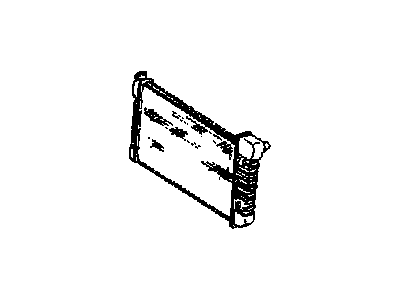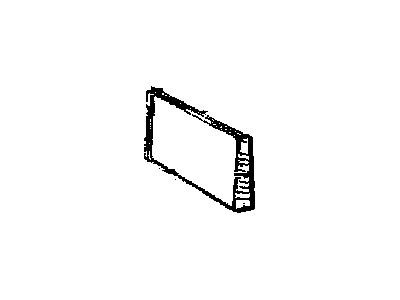My Garage
My Account
Cart
Genuine Chevrolet El Camino Radiator
Cooling Radiator- Select Vehicle by Model
- Select Vehicle by VIN
Select Vehicle by Model
orMake
Model
Year
Select Vehicle by VIN
For the most accurate results, select vehicle by your VIN (Vehicle Identification Number).
2 Radiators found
Chevrolet El Camino Radiator
The Chevrolet El Camino Radiator is an important automotive attachment responsible for the removal of heat from the engine coolant as well as expelling it to the atmosphere through a heat exchange process. Often consisting of a core surrounded by fins with inlet and outlet tanks, the radiator is positioned at the front part of the car to get the most of the available air. Contemporary radiators possess an aluminum core with a plastic or aluminum container; however, copper/brass types are also possible. The main function of the radiator is the removal of the heat from the engine and performance radiators are those which offer the enhancements in the material, structure and cooling. These radiators are made from lightweight aluminum; the modern designs are larger tubes and more fins for better thermal efficiency and Heat Engines. Regarding Chevrolet El Camino Radiators, it is crucial in the direct-fit or universal design to monitor internal heat and dictate the car's performance level.
Each OEM Chevrolet El Camino Radiator we offer is competitively priced and comes with the assurance of the manufacturer's warranty for the part. Furthermore, we guarantee the speedy delivery of your orders right to your doorstep. Our hassle-free return policy is also in place for your peace of mind.
Chevrolet El Camino Radiator Parts Questions & Experts Answers
- Q: How to remove and install a radiator on Chevrolet El Camino?A: Disconnect the negative battery cable and drain the radiator. Disconnect the radiator upper and lower hoses and the automatic transmission cooling lines if applicable. Disconnect the radiator shroud and hang it over the fan. The shroud is attached with screws going into the radiator with clips or staples across the bottom. Remove the upper metal panel at the top of the radiator. Lift the radiator straight up and out of the engine compartment. Be careful not to scratch the paint on the front nosepiece. If coolant drips on any body paint, immediately wash it off with clear water as the antifreeze solution can damage the finish. With the radiator removed, it can be inspected for leaks or damage. If in need of repairs, have a professional radiator shop or dealer perform the work as special welding techniques are required. Bugs and dirt can be cleaned from the radiator by using compressed air and a soft brush. Do not bend the cooling fins as this is done. Inspect the rubber mounting pads which the radiator sits on and replace as necessary. Lift the radiator into position making sure it is seated in the mounting pads. Install the upper panel, shroud and hoses in the reverse order of removal. Connect the negative battery cable and fill the radiator. Start the engine and check for leaks. Allow the engine to reach normal operating temperature and add coolant until the level reaches the bottom of the filler neck. Install cap with arrows aligned with the overflow tube.











